16-inch MacBook Pro vs Dell XPS 15: Which laptop wins?
Apple's new 16-inch MacBook Pro has arrived but how does it compare to the excellent XPS 15? We compared them to find out.
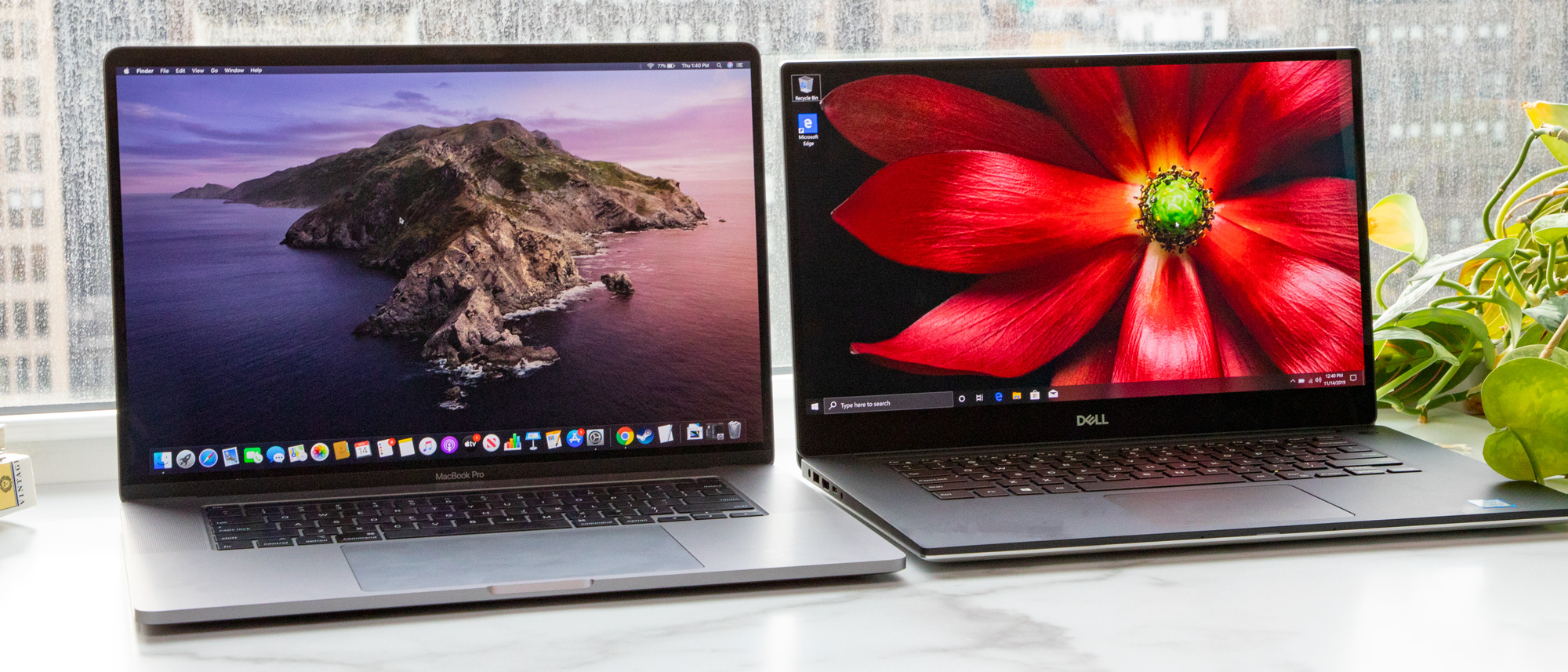
The 16-inch MacBook Pro has arrived. Along with a larger display, the new model sports an improved keyboard, thinner bezels and faster performance. Those subtle but crucial changes elevate the 16-inch MacBook Pro above its predecessor, making it the best MacBook for creators.
But how does it compare to its top Windows rival, the Dell XPS 15? For its part, the XPS 15 goes toe-to-toe with the MacBook Pro for performance and can be configured with an optional 4K OLED display. Dell's laptop also has a compact chassis and is made of premium materials. That’s why it’s one of the best laptops around.
We pitted these two flagship laptops against each other to see which portable powerhouse you should buy. Read on to find out.
16-inch MacBook Pro vs Dell XPS 15: Specs Compared
| Header Cell - Column 0 | Dell XPS 15 | 16-inch MacBook Pro |
|---|---|---|
| Price | $999.99 | $2,299.99 |
| Display | 3840 x 2160 px | 2072 x 1920 px |
| CPU | Intel Core i5-9300H processor | 9th gen Core i7, 9th Gen Core i9 |
| RAM | 8GB (up to 16GB) | 16GB (up to 64GB) |
| SSD | 128GB | 512GB (up to 8TB) |
| Ports | 2 USB 3.1 Type-A; Thunderbolt 3; HDMI 2.0; headphone/mic jack | 4 Thunderbolt 3; headphone jack |
| Battery Life (hrs:min) | 6:41 | 10:55 |
| Geekbench | 7,584 | 7,250 |
| Size | 14.1 x 9.3 x 0.7 inches | 14.1 x 9.7 x 0.64 inches |
| Weight | 4.5 pounds | 4.3 pounds |
Design
The new 16-inch MacBook Pro is essentially the 15-inch version with an expanded screen and slimmer display bezels. Apart from these changes, the 16-inch MacBook Pro looks identical to the versions we've seen in the past.

As such, the 16-inch model has a refined, if somewhat bland design. Its aluminum chassis has a minimalist aesthetic defined by clean surfaces and round curves. Centered on the lid is an glossy-black Apple logo surrounded by smooth gray aluminum. On the deck is an enormous trackpad underneath a black keyboard with a Touch Bar flanked by upward-facing speakers.
It's a familiar look but one modernized with slim display bezels. The frame surrounding the MacBook Pro's screen has been trimmed down, which results in a more immersive viewing experience.
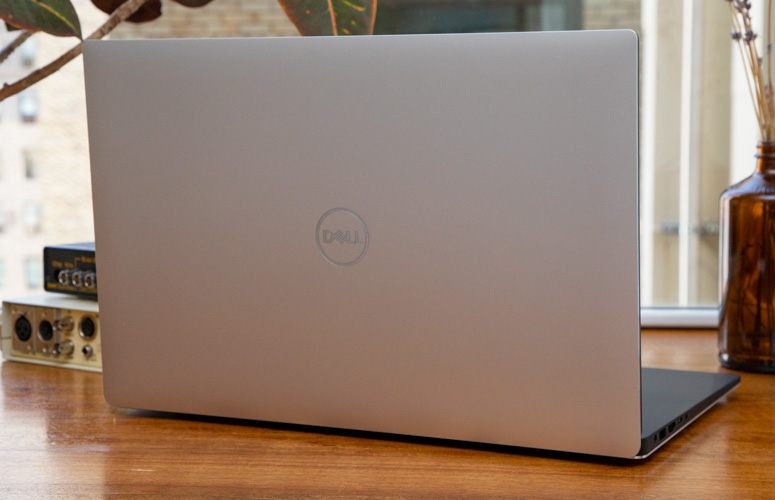
But Dell still does edge-to-edge better than everyone else. The XPS 15's miniscule bezels are noticeably thinner than those on the MacBook Pro. Not only do they draw your eyes toward the laptop's 15.6-inch display, but the InfinityEdge screen allowed Dell to reduce the XPS 15's footprint. Best of all, Dell killed the nosecam by crafting a microscopic webcam that fits on the top bezel.
Sign up to receive The Snapshot, a free special dispatch from Laptop Mag, in your inbox.
Upscale and modern, the XPS 15's blend of carbon fiber and aluminum is as premium as it gets. On the lid, a chrome Dell logo glistens against a silver, anodized-aluminum surface while the deck is made from a luxurious soft-touch carbon fiber. Similar to the MacBook Pro's Touch ID sensor, the XPS 15's power button doubles as a fingerprint sensor.
The 16-inch MacBook Pro weighs 4.3 pounds compared to the 4.5-pound XPS 15. The Apple laptop is even a tad thinner, at 14.1 x 9.7 x 0.64 inches, compared to the XPS 15's 14.1 x 9.3 x 0.7 inch chassis. Apple
Winner: Dell XPS 15
Ports
Apple didn't take advantage of the 16-inch MacBook Pro's larger size, choosing instead to put all of its chips on Thunderbolt 3.
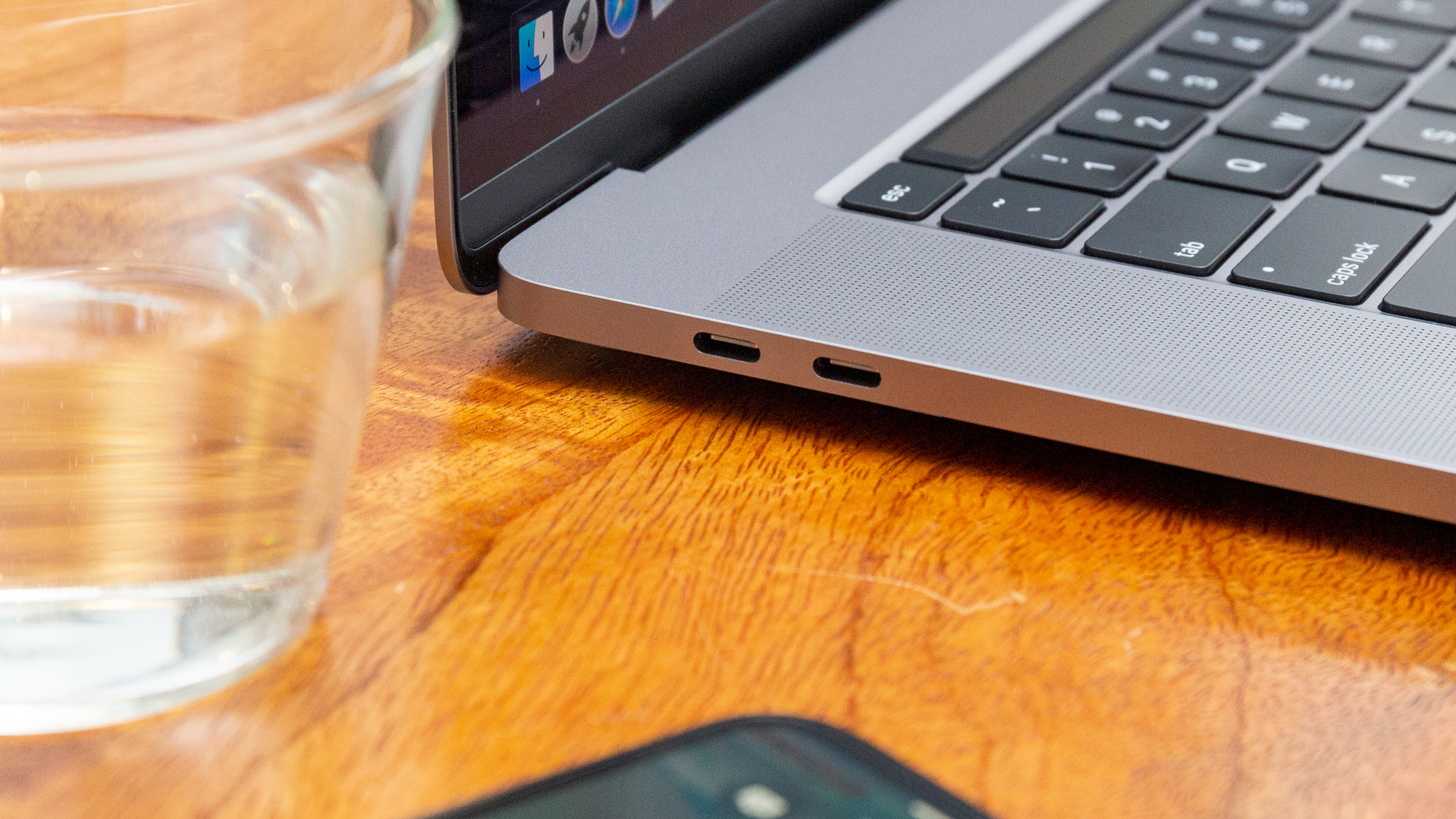
Like the MacBook Pro before it, the 16-inch model has four Thunderbolt 3 ports split evenly on each side, along with a headphone jack on the right edge.

The XPS 15 has a wider variety of ports, which lowers the chances of you ever needing a dongle. On the right side of the XPS 15 is a USB 3.1 Type-A port and a lock slot next to an LED battery indicator. On the left side you'll find another USB 3.1 Type-A port, a Thunderbolt 3 input, HDMI 2.0 and a headphone jack.
Winner: Dell XPS 15
Display
The MacBook Pro's 16-inch, 1920p resolution display is absolutely gorgeous, exhibiting crisp details, vivid colors and exceptional brightness. And yet, it is still no match for the XPS 15's dazzling 4K OLED panel. At least, when it comes to viewing content. If you're creating content and need the most accurate colors then go with the MacBook Pro.

When I watched a trailer for a Star Wars: The Rise of Skywalker, colors popped with brilliant saturation on the XPS 15's 4K OLED display --- sometimes to a fault. Certain scenes looked lurid on the XPS 15. For example, a smoky sky behind Daisy Ridley was a medium shade of blue on the XPS 15 whereas the same background was a clean, crisp white on the MacBook Pro's panel. Similarly, Chewbacca's fur, while the proper light-brown tone on the MacBook Pro, leaned orange on the XPS 15. Still, for casually viewing content, the XPS 15's super-vivid OLED screen is a delight.
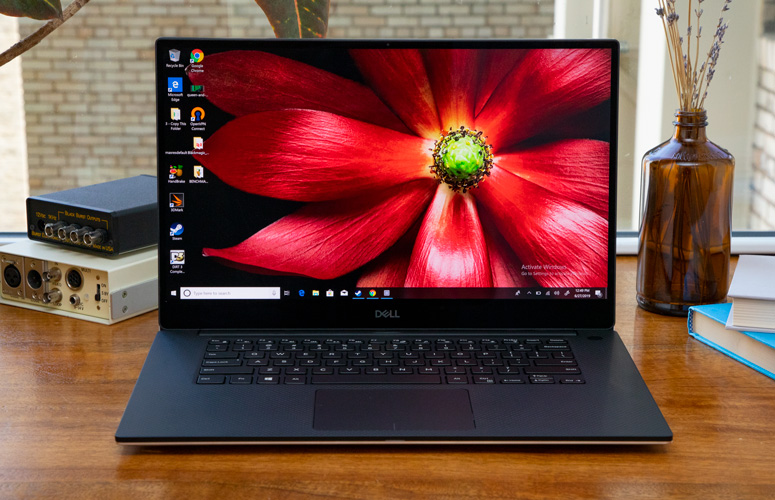
According to our colorimeter, the XPS 15's OLED display covers an outstanding 239% of the sRGB color gamut, which explains why colors burst to life more than they did on the MacBook Pro's (114%) panel. The MacBook Pro disappointingly falls short of the premium laptop average (124%) and the XPS 15's non-OLED 4K display (210%)
Both panels get very bright, but OLED proved why it's the most advanced display technology around. Reaching a blinding 636 nits, the XPS 15's display outshines the MacBook Pro's screen (429.2 nits) by a fairly wide margin. Both get much brighter than the category average (359 nits).
MORE: Best Dell and Alienware Laptops
Overall, the XPS 15's display wins this round for being brighter and more colorful but content creators should opt for the more color-accurate MacBook Pro.
Winner: Dell XPS 15
Keyboard and touchpad
Yes, it's true. Apple finally ditched the Butterfly keyboard and replaced it with a new "Magic Keyboard." The replacement uses traditional scissor switches and a new keycap structure with a rubber dome underneath for support.
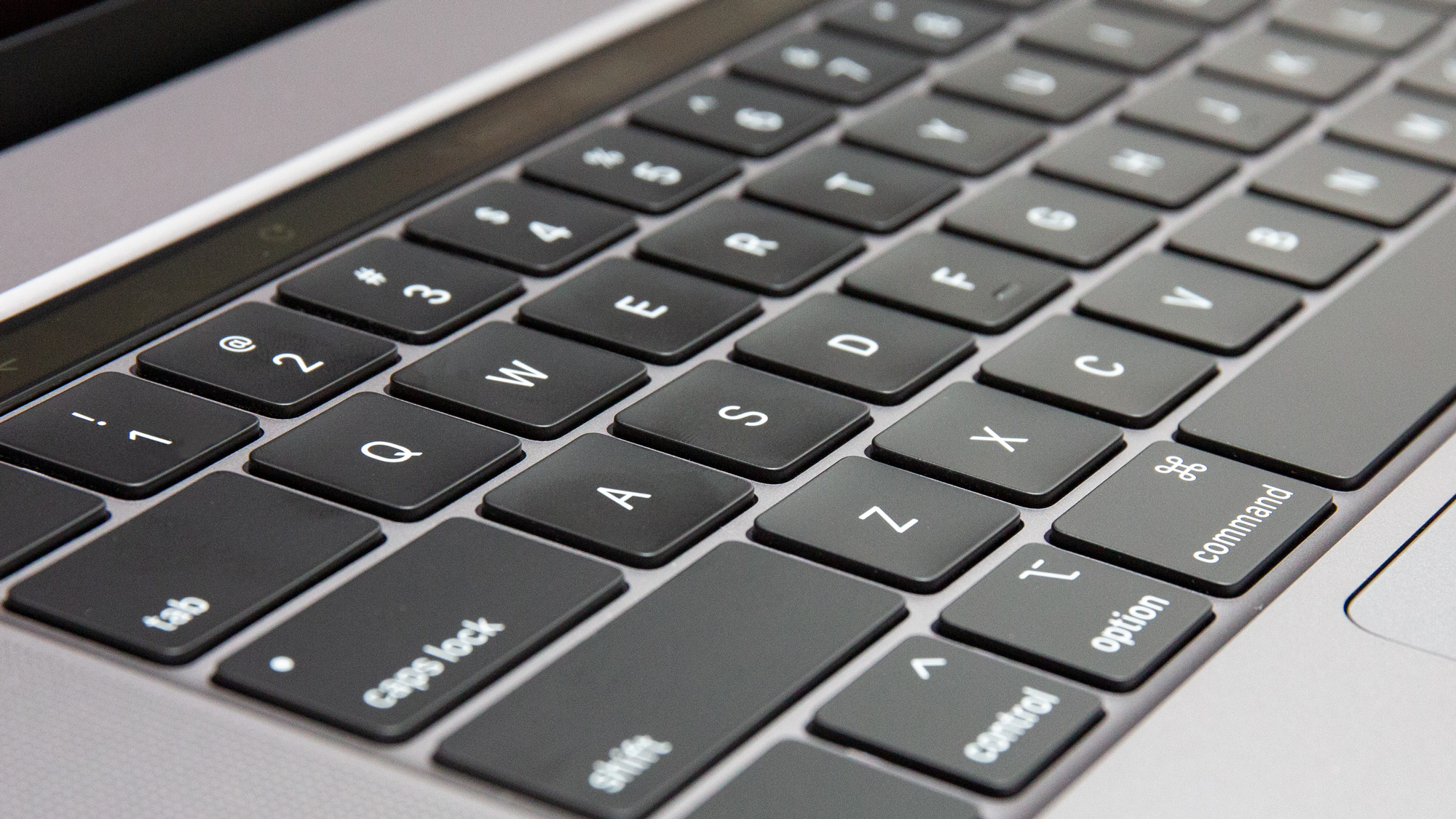
The resulting keys are much more comfortable to type on, offering deeper travel and a softer landing than the stiff, shallow keys on the previous MacBook Pro. More importantly, the new keyboard promises to be more reliable than the troubled Butterfly keys. Other improvements to the keyboard include a dedicated Escape key and a new arrow key layout.
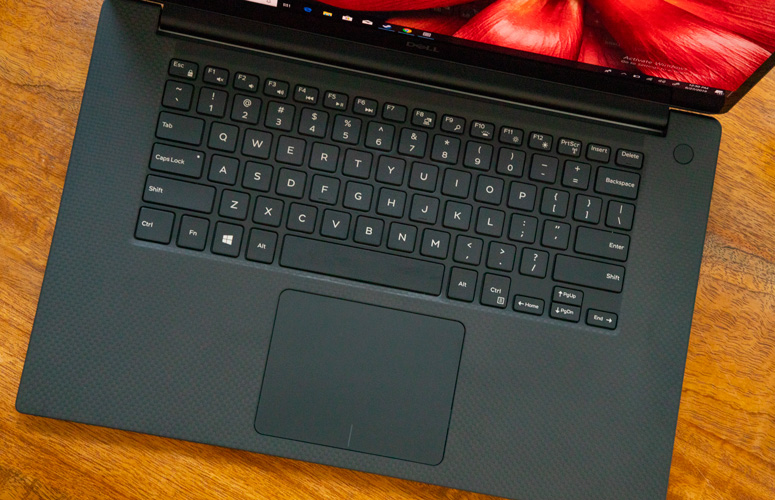
While all of these smart changes result in a much better typing experience, the 16-inch MacBook Pro's keys are shallower than the XPS 15's keys, which sink just a bit deeper.
The XPS 15 also has a comfortable keyboard, although its keys are much smaller than those on the Apple laptop. In fact, the keys are a tad small for my medium-sized hands so I suspect that people with beefy fingers might feel cramped. Even so, I give the edge to the XPS 15's keyboard for its deeper travel and bouncier switches.
Using the MacBook Pro's new keyboard, I typed at 120 words per minute at an accurate of 96% on the 10fastfingers.com typing test. That's similar to the 119-wpm with a 96% accuracy that I typed on the XPS 15, and my 119-wpm, 95% accuracy average.
In typical Apple fashion, the 16-inch MacBook Pro's glass trackpad is gigantic. Seriously, it extends almost halfway across the deck. The 6.2 x 3.9-inch surface accurately tracked my swipes and I had no problems using gestures, like pinch-to-zoom. The MacBook Pro's Force Touch buttons feel almost like actual clickable mechanisms but I prefer the XPS 15's integrated clickers.
MORE: MacBook Keyboard Troubleshooting Guide: News, Problems and ...
The XPS 15's 5.9 x 3.4-inch soft-touch touchpad feels great and was responsive as I browsed the web while using Windows 10 gestures, like three-finger swipes to change windows. It's just nowhere near as big as the MacBook Pro's.
Winner: Dell XPS 15
Performance
You shouldn't have any problems running the most demanding programs on either of these machines. Both pack up to 9th Gen Intel Core i9 processors, up to 64GB of RAM and discrete graphics, making them some of the most powerful consumer laptops around.

We reviewed the 16-inch MacBook Pro with a 9th Gen Core i9 CPU, 32GB of RAM, a 2TB SSD and AMD Radeon Pro 5500M GPU. The XPS 15 we tested has similar specs, including a Core i9-9900HK CPU, 32GB of RAM, a 1TB m.2 NVMe PCIe SSD and Nvidia GeForce GTX 1650 graphics.
The 16-inch MacBook Pro scored a 7,250 on the Geekbench 5 overall performance test, falling just short of the XPS 15's 7,584 result.
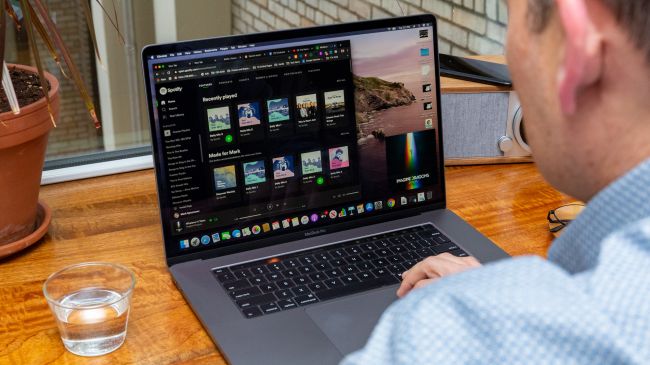
These two powerhouses tied on our video transferring test, both taking 8 minutes flat to convert a 4K video to 1080p resolution. The average premium laptop need 22 minutes and 10 seconds to complete the task, which goes to show how fast these machines really are.
To test the SSDs on the MacBook Pro and XPS 15, we used the Blackmagic Disk Speed Test. The 16-inch MacBook Pro turned in a write speed 2,224 MBps and a read speed of 2,116, while the MacBook Pro sped ahead with a score of 2,805/2540 MBps for write and read.
MORE: Best Apple Laptops
While neither of these machines is a gaming laptop, we put their GPUs to the test by firing up Rise of the Tomb Raider. We played at 1920x1200 pixel with VSync off and on the Very High preset setting for graphics. The MacBook Pro turned in a score of 27.23 fps, while the Dell XPS 15 hit 19.54 fps
Winner: 16-inch MacBook Pro
Audio
First the AirPods Pro, now the MacBook Pros' six-speaker setup; Apple is setting the barwhen it comes to consumer audio.
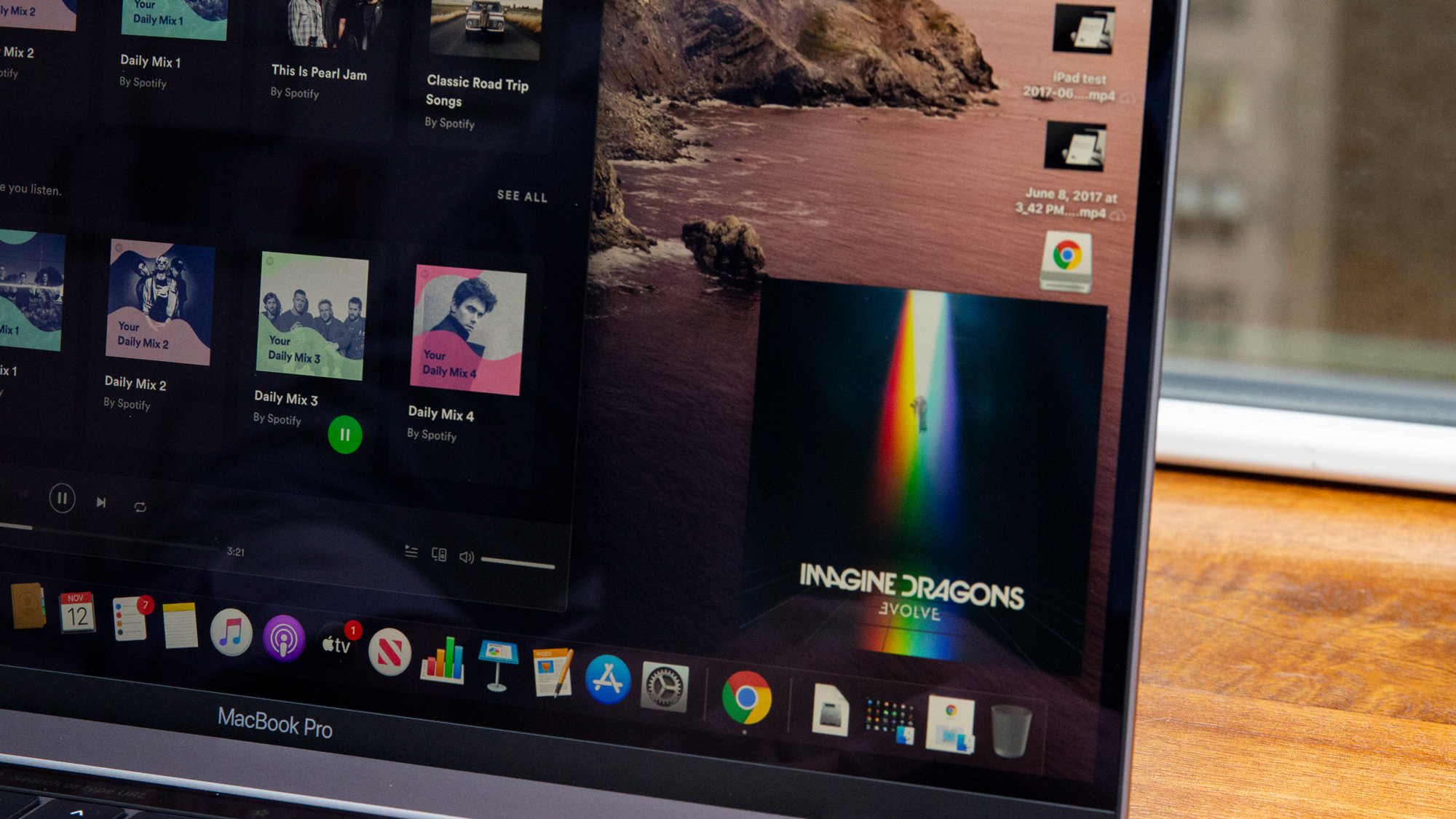
The MacBook Pros' "force-cancelling" speakers blew me away. The Killers' upbeat jam "Run for Cover" filled a medium-size room and could easily be heard from outside a thick glass door. Drum beats slammed with force most laptops aren't capable of producing, while the rock song's electric guitars were separated enough that I could clearly hear each note being played. My only qualm is that Brandon Flowers' vocals, while crisp, sounded a bit recessed. I had to crank up the volume to get his voice to soar above a mix of electric and percussion instruments.
Weak, shrill and hollow, the XPS 15's dual bottom firing speakers sound terrible in comparison. If you plan on buying the XPS 15 and want the same sound quality you get from the MacBook Pro, pick up a good Bluetooth speaker.
Winner: 16-inch MacBook Pro
Battery Life
T’was beauty that killed the beast and in the case of the XPS 15, that gorgeous 4K OLED display paired with those high-powered specs proved to be its downfall on our battery test. After continuous web surfing over Wi-Fi, the laptop tapped out after 8 hours and 7 seconds. The non-OLED 4K version of the XPS 15 lasted a better 8:48, but it’s still not close to the MacBook Pro’s runtime.
The MacBook Pro outpaced the XPS 15 with a time of 10:55. It’s definitely better than Dell, but it fails to match any of the notebooks on our laptops with the best battery life page. The top laptop on the list, the Lenovo ThinkPad T480, lasted at whopping 17:19. Still, the MacBook outlasted the Dell by nearly three hours and is the clear winner in this contest.
Winner: 16-inch MacBook Pro
Value and Price
It's time to start saving. Dell and Apple spared on expense crafting these flagship laptops and it shows in their sky-high prices. Apple's machine is especially expensive.
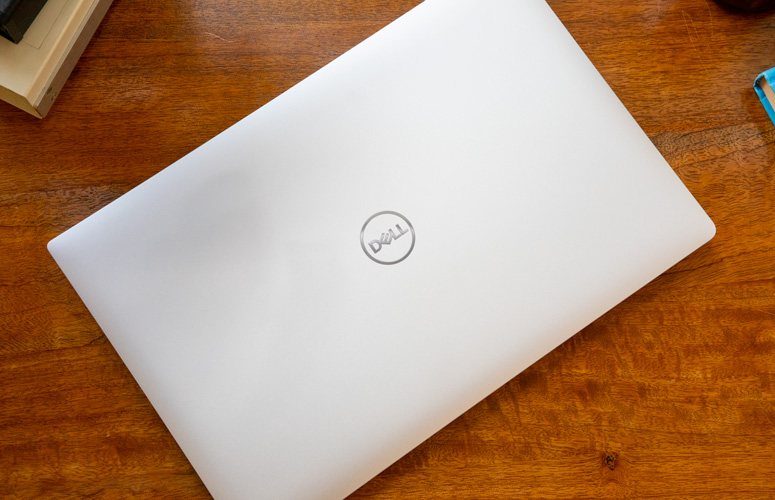
We'll start with the Dell. The XPS 15 starts at $999 for a base model with a 1080p display, a Core i5-9300H CPU, 8GB of RAM and a 256GB SSD. For $1,729, you can step up to the 4K OLED display, a Core i7-9750H CPU, 16GB of RAM, a 512GB SSD and Nvidia GTX 1650 graphics. The $2,999 maxed-out version we reviewed has a Core i9-9980HK CPU, 64GB of RAM, a 2TB SSD and GTX 1650 graphics.
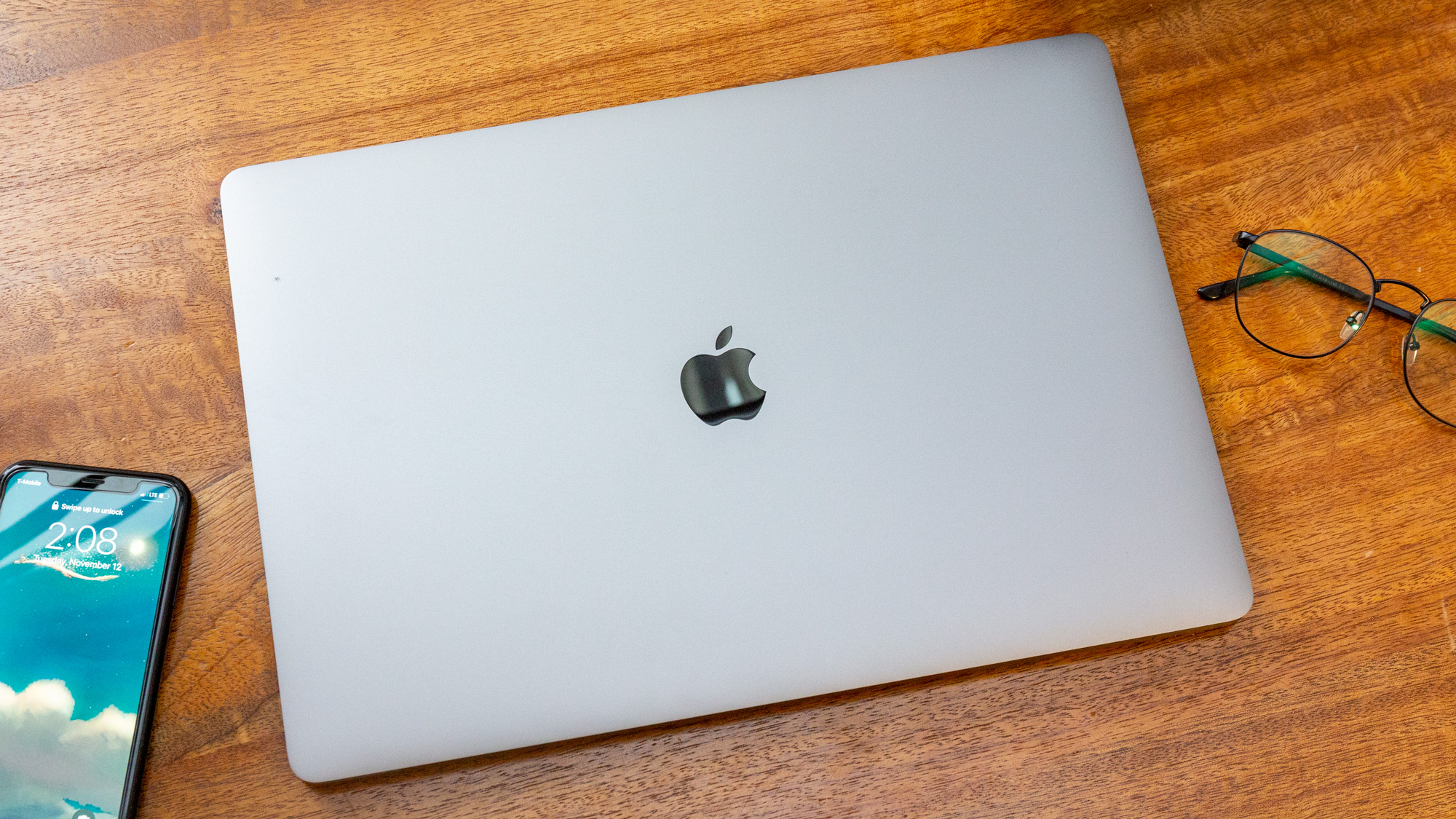
Hold on to your wallets because it's time to price out the MacBook Pro. It starts with the base model, which costs $2,399 and has a 9th Gen Core i7 CPU, 16GB of RAM, a 512GB SSD and AMD Radeon Pro 5300M graphics. From there, you can upgrade to a Core i9 CPU for $300 extra or double the RAM to 32GB for another $400.
Our review unit packs a Core i9 CPU, 32GB of RAM, a 2TB SSD and an AMD Radeon Pro 5500M GPU. At $3,899, this model costs $900 more than the XPS 15 with 64GB of RAM. You'll need to spend another $400 to get the same amount of memory in the MacBook Pro. For fun, we priced out the most expensive MacBook Pro --- one with a Core i9 CPU, 64GB of RAM, a Radeon Pro 5500M GPU and an 8TB SSD --- and landed at a jaw-dropping $6,099.
Winner: Dell XPS 15
Overall Winner: XPS 15
| Header Cell - Column 0 | Dell XPS 15 | 16-inch MacBook Pro |
|---|---|---|
| Design (10) | 9 | 7 |
| Ports (5) | 5 | 2 |
| Display (15) | 14 | 13 |
| Keyboard/Touchpad (15) | 13 | 12 |
| Performance (20) | 18 | 20 |
| Audio (5) | 2 | 5 |
| Battery Life (20) | 15 | 19 |
| Value (10) | 8 | 4 |
| Overall (100) | 84 | 82 |
It took a while, but Apple gave the people what they wanted with the latest Apple MacBook Pro. The new 16-inch MacBook Pro arrives with a new keyboard that offers deeper travel than previous iterations and is really comfortable to type on. The display is larger and surrounded by thin bezels, and it offers the showstopping performance that Apple fans have come to expect from Apple’s Pro series.
The 16-inch MacBook Pro also delivers considerably longer battery life than the XPS 15, and
there are even some unexpected boons, such as the speakers, which might be some of the best speakers we’ve heard on a laptop. However, the price continues to be a sticking point with the MacBook Pro costing several hundred dollars more than a comparably configured XPS 15.
The Dell XPS 15 squeaks out the win here with its captivating 4K OLED display, immensely comfortable keyboard and stellar performance. We also prefer its sleeker design, and helps that the company gives consumers a plethora of ports to play with instead of relegating them to dongle life. Plus, you don’t necessarily have to shell out an arm and a leg to own one. Both of these premium laptops are well worth the splurge, but the XPS 15 wins on sheer value.
Phillip Tracy is the assistant managing editor at Laptop Mag where he reviews laptops, phones and other gadgets while covering the latest industry news. After graduating with a journalism degree from the University of Texas at Austin, Phillip became a tech reporter at the Daily Dot. There, he wrote reviews for a range of gadgets and covered everything from social media trends to cybersecurity. Prior to that, he wrote for RCR Wireless News covering 5G and IoT. When he's not tinkering with devices, you can find Phillip playing video games, reading, traveling or watching soccer.

